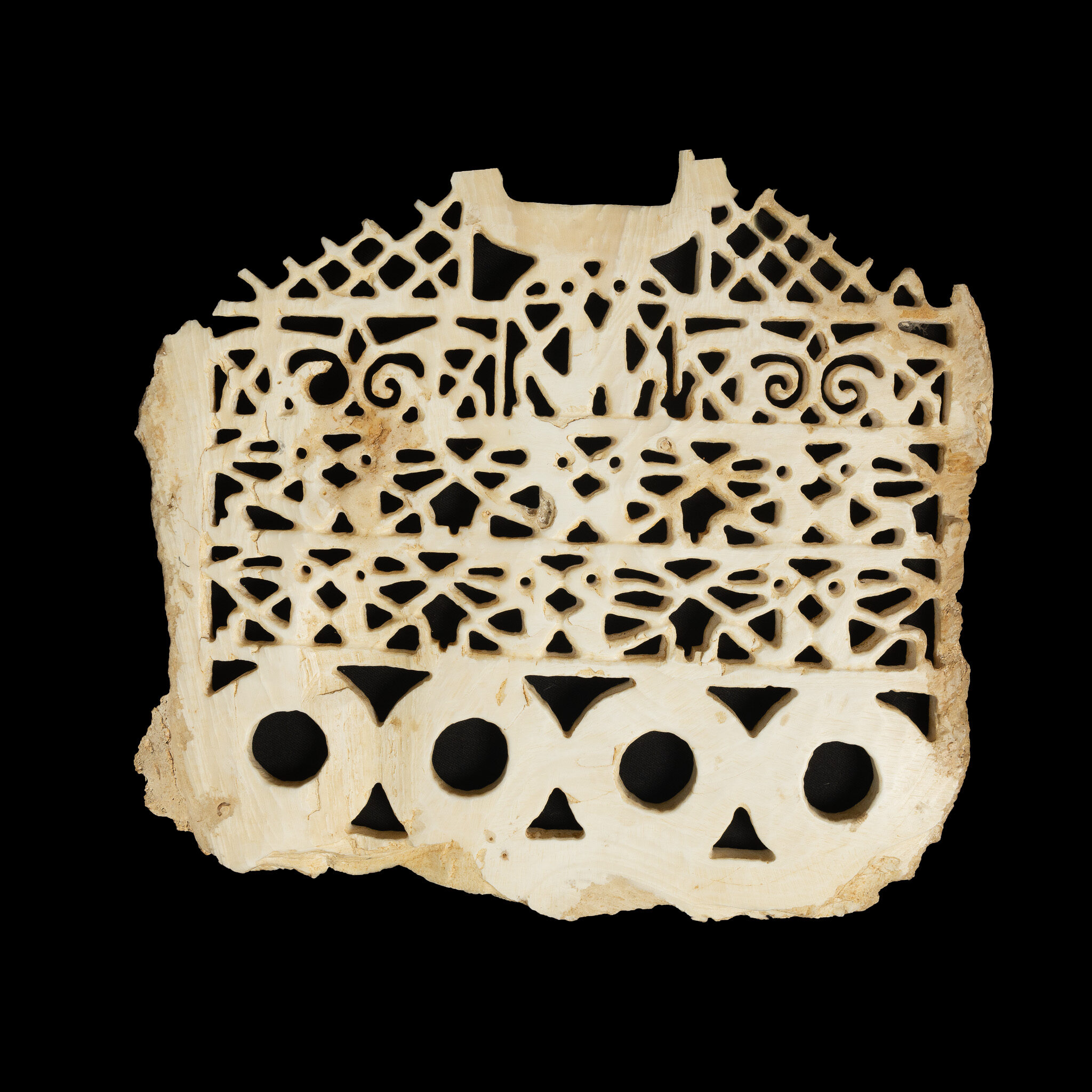COLLECTION
Solomon Islands Barava
$12,500.00
An exceptional “museum quality” Solomon Islands “BARAVA” Clam Shell Plaque.
Size :- Height 10 in / 26 cm Width 11 in / 28cm Thickness 0.5 in / 1.5cm
An exceptional "museum quality" Solomon Islands "BARAVA" Clam Shell Plaque.
These very rare, highly intricate, beautiful, treasured collector's items - "Barava", are an ancient, traditional form of what today we would classify as a "binding, legal , land contract document".
Back, over a hundred years ago and more , every village and Clan would have their own Barava, it's prime functions were to demonstrate tribal identity, and most importantly, tribal ownership of their land. To the village or Clan, their Barava represented a proud statement of village wealth, ownership and identity and were respected as sacred. They were kept in the safety of the men's - "Sacred, Men's House" - the "Tambu (Forbidden House) House", within the village or another other safe , secret hiding location. Baravas were never traded or used as a form of currency. If stolen during raids or during head hunting attacks, the land they represented was never transferable and the village land still remained belonging to the original village even if the Barava had been stolen as a trophy.
Baravas were carved out from semi fossilized, giant clam shell, (the Tridacna Gigas Clam shell), and this ancient tradition has only been found in the Western region of the Solomon Islands. This ancient fretwork of art skill has been lost over the the last generations, and none have been made for over 100 years plus, thus adding to the scarcity and great value of such a deeply meaningful and artistic object. *See below how they were carved later.
This stunningly beautiful , intensely detailed Barava most probably owned by the village Chief, has survived so many years of history, and is amazingly, virtually complete, with only the most minimal damage. The old patina of this semi fossilised shell base is typical for its great age. The slight yellowish colouration of the clamshell used for this Barava states it is of the most valuable quality, as this colouration is only found from a remote and secret high quarry up on Mt. Kela ( 2283 feet) on the remote Western Province island of Ranongga and is highly revered. From all those years ago, until now, the secret of this one quarry location has been kept, only passed on from generation to generation by extremely limited, select few people.
At the top of this stunning, ancient traditional Barava fretwork is the symbol of a canoe complete with the traditional head prow. Beneath the canoe are two human figures sitting back to back, followed by two lower rows, all joined with geometrical designs rows, of six anthropomorphic figures, sitting back to back on each level, representing the Clan or village community. Triangular shapes adorn and join the fretwork art, with the triangle shapes traditionally representing the artistic shape of the original clam shell and other traditional symbols.
HOW BARAVAS WERE MADE. The making of a Barava was a incredibly lengthy process taking many years (minimum five and more years), due to working on the clamshell material, without any modern day tools to assist. After carving out a flat slab base from the giant clamshell, the artisans used hand made drills from timber and vine to create a working drill by rubbing their hands together with the drill stem between their palms and with the addition of sand and water to help create friction. A singular hole was the first stage then, incredibly the rest of the ancient, geometrical traditional design followed. To finish the artwork, abrasive, rough sharks-skin was used to smooth every part of the intricate creation.
Reference - Abstract titled Barava ; Land of Title Deeds in Fossil Shell Western Solomon Islands, by - Rhys Richards & Kenneth Roga - Cultural Affairs Officer in Gizo, Solomon Islands .Publication -Tuhinga. Records Museum of New Zealand Te Papa . Issue 15 2004. In which was stated that the researchers Richards and Roga in 2002 spoke directly with Chief Lezin Betekera of Ombombulu, and were informed by the Chief in 2002 that no one has witnessed the traditional making of these sacred plaques. The information had been passed on purely by mouth, since before his grandfather had been born, and that the art skill had died since those many generations ago. He was told that small holes in the clamshell were drilled with simple hand made drills (called Pisu Mongo in their native tongue) . These simple drills were made from local timber and fitted with a bow which was then operated by rubbing both hands together around the drill stick which was connected to part of an arial root from a bush creeping plant called "Asama" in local language. This part of an aerial root was coated in damp sand to make friction thus resulting in the cutting of the shell. Abrasive sharks skin strips, with its finely abrasive surface, were used for smoothing the rough surfaces after the cutting of the shapes. Chief Lezin Betekara in 2002 told the two researchers that his grandfather had told him that the carving of a Barava was a very tedious task which took a similar time as it takes for a coconut to grow from a pod into a fruit bearing tree (approx. around 5 + years).
Size :- Height 10 in / 26 cm Width 11 in / 28cm Thickness 0.5 in / 1.5cm
Additional information
| Weight | 1.2 kg |
|---|---|
| Dimensions | 26 × 28 × 1.5 cm |






